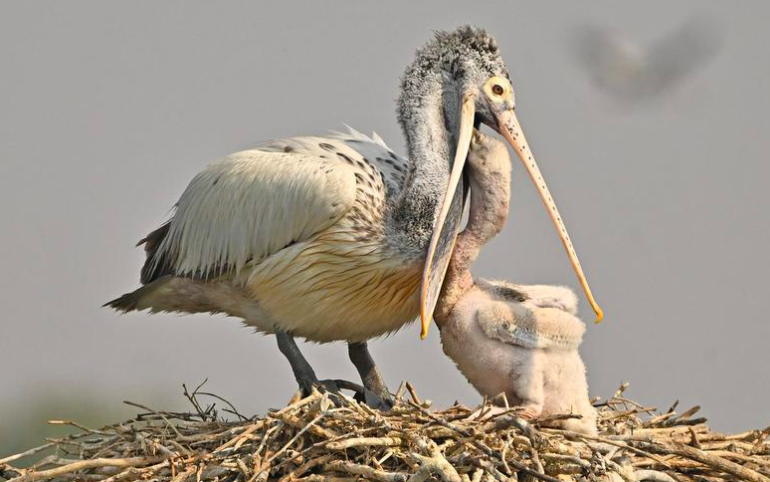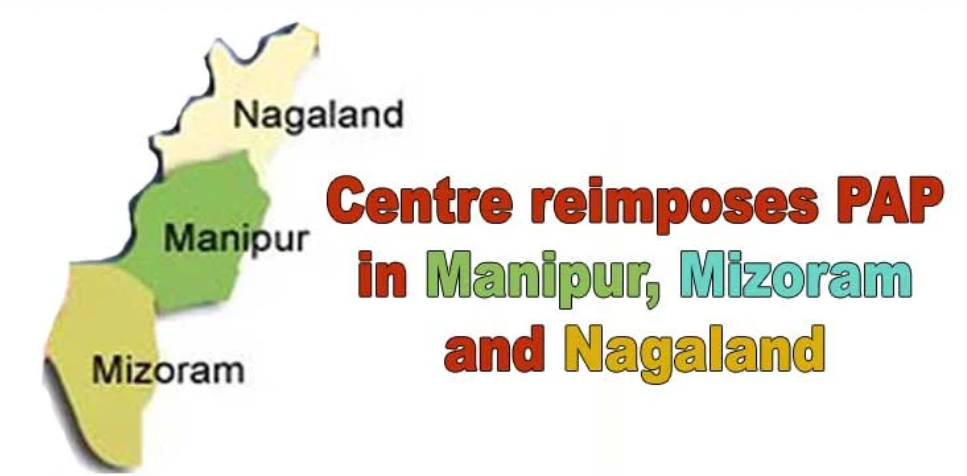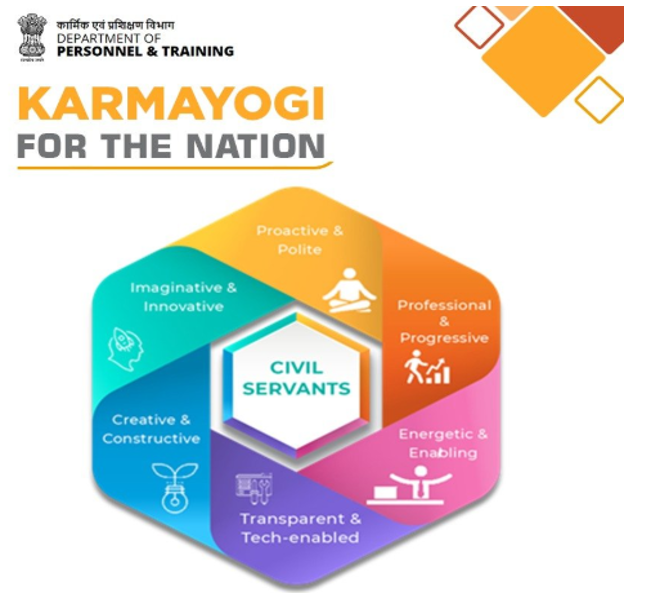20 December 2024 : Daily Current Affairs
1. Disability and queer health in medical education — India under the lens
- 1. Disability and queer health in medical education — India under the lens
- 2. Supreme Court Declares Coconut Oil as Edible Oil, Resolves 15-Year Taxation Debate
- 3. NITI Aayog Releases Report on “S.A.F.E. Accommodation: Worker Housing for Manufacturing Growth”
- Prelims Facts
- 1. The political crisis in South Korea
- 2. Hema panel report: HC expands nodal officer’s mandate
- 3. Spot-billed pelican
- 4. India and France Collaborate to Transform North and South Blocks into World’s Largest Museum
- 5. Centre reimposes Protected Area Regime in 3 Northeastern states, including Manipur
- 6. Scotch Tape Sparks Breakthrough: Scientists Create Ultra-Thin Diamond Films with Revolutionary Potential
- 7. China, Nepal launch global dialogue series
- 8. MISSION KARMAYOGI
(Source – The Hindu, International Edition – Page No. – 7)
| Topic: GS2 – Social Justice |
| Context |
|
Exclusion of Disability and Queer Rights in Medical Curriculum
- India’s National Medical Commission (NMC) has been criticized for allegedly not including disability and queer rights in its medical curriculum.
- A commentary published in The Lancet Regional Health – Southeast Asia highlights the need to integrate these rights into medical education.
Impact on Human Rights and Health Policies
- Exclusion from medical education hampers human rights and undermines the Agenda 2030 goal of “leaving no one behind.”
- Globally, 16% of the population experiences disability, with this number increasing annually.
- India’s high road accident fatalities and status as the “diabetes capital of the world” contribute significantly to disability rates.
Vulnerabilities of Marginalized Communities
- Both disability and transgender communities in India share vulnerabilities, including mistrust toward the medical establishment.
- These groups face health inequities and require representation in medical policy frameworks.
Role of Medical Education
- India produces the highest number of medical graduates globally, many of whom work internationally.
- Training compassionate and inclusive medical professionals is vital to addressing structural and attitudinal barriers in healthcare.
Language and Inclusivity in Healthcare
- Non-inclusive language perpetuates inequality and warrants urgent attention.
- Policymakers and the medical community should prioritize clear, consistent, and respectful language.
NMC’s Responsibility and Legal Concerns
- The NMC emphasizes equitable healthcare and ethical medical standards.
- Its alleged omission of disability and queer rights is considered a failure of duty and potentially illegal under parent legislation.
| National Medical Commission (NMC) |
| The National Medical Commission (NMC) is a statutory body in India that regulates medical education and professionals. Here’s some key info:
|
| Practice Question: Discuss the significance of including disability and queer rights in medical education in India. Highlight the challenges faced by marginalized communities in healthcare and suggest measures to ensure inclusivity in medical policy frameworks.” (150 Words /10 marks) |
2. Supreme Court Declares Coconut Oil as Edible Oil, Resolves 15-Year Taxation Debate
(Source: Indian Express; Section: Explained; Page: 12)
| Topic: GS2 – Governance |
| Context: |
|
Analysis of News:
Taxation Evolution of Coconut Oil
- Under the pre-GST regime, coconut oil was taxed at 8% as an edible oil, in alignment with international Harmonized System of Nomenclature (HSN) norms.
- In 2009, a circular reclassified coconut oil in small containers as hair oil, subjecting it to a higher 16% tax.
- This circular was withdrawn in 2015 after tribunal rulings confirmed that packaging size alone doesn’t dictate its use.
- With GST’s introduction in 2017, the debate re-emerged, with smaller packs often presumed to be for cosmetic use.
Legal Challenges and Tribunal Rulings
- Several manufacturers faced higher tax demands, leading to appeals before tribunals like the Customs, Excise, and Service Tax Appellate Tribunal (CESTAT).
- These tribunals upheld that coconut oil is an edible product, irrespective of container size.
- However, the rulings were contested by the Central Excise authorities, bringing the matter to the Supreme Court.
Supreme Court’s Landmark Decision
- The Supreme Court rejected the “common parlance test,” which associates product use with market perception, stating it is applicable only when legal definitions are unclear.
- It ruled that container size cannot solely determine classification. The court emphasized adherence to specific legal provisions and HSN norms, clarifying that multipurpose use, such as for hair or cooking, does not exclude coconut oil from being categorized as edible.
Significance of the Ruling
- The verdict harmonizes classification practices under GST, providing clarity for manufacturers and consumers.
- It prevents arbitrary tax impositions and underscores the importance of legal definitions over subjective interpretations.
| Harmonized System of Nomenclature Code (HSN) |

|
| Practice Question: Examine the significance of the Supreme Court’s recent ruling on the classification of coconut oil as an edible oil for taxation purposes. How does this decision impact the GST regime and the broader legal framework for goods classification? (150 words/10 m) |
3. NITI Aayog Releases Report on “S.A.F.E. Accommodation: Worker Housing for Manufacturing Growth”
(Source – https://pib.gov.in/PressReleseDetail.aspx?PRID=2086086®=3&lang=1 )
| Topic: GS2 – Governance, GS3 – Indian Economy |
| Context |
|
Introduction
- The report by NITI Aayog emphasizes the importance of secure, affordable, flexible, and efficient (S.A.F.E.) accommodations for industrial workers in enhancing India’s manufacturing sector.
- In the Union Budget 2024-25, the Finance Minister highlighted rental housing with dormitory-style accommodations under a Public-Private Partnership (PPP) model, supported by Viability Gap Funding (VGF).
India’s Manufacturing Aspirations: Vision for Viksit Bharat
- Manufacturing Goals: India aims to increase the manufacturing sector’s contribution to GDP from 17% to 25% by 2047 under initiatives like Make in India and Atmanirbhar Bharat.
- Workforce Needs:
- The Economic Survey 2023-24 projects India must generate 7.85 million jobs annually until 2030, with manufacturing as a significant contributor.
- Large-scale factories require centralized workforce housing, primarily for migrant workers.
- Current Challenges:
- Inadequate housing near industrial hubs causes high attrition rates, reduced productivity, and workforce instability.
- Housing scarcity restricts migration, especially for women, limiting the sector’s growth.
Why S.A.F.E. Accommodation Matters
- Enhancing Productivity and Retention: Proximate, well-designed housing improves quality of life, reduces commute times, and stabilizes the workforce.
- Attracting Global Investments: High-quality accommodations showcase India’s commitment to international standards, enhancing its appeal as a manufacturing destination.
- Aligning with Global Labour Standards: Adherence to international standards boosts India’s global competitiveness and strengthens partnerships with multinational firms.
- Win-Win-Win Scenario:
- Workers enjoy improved living conditions and higher satisfaction.
- Companies benefit from workforce stability and reduced costs.
- The government achieves sustainable development and increased investments.
Challenges in Scaling Up Worker Accommodation
- Restrictive Zoning Laws: Residential development is often prohibited in industrial zones.
- Conservative Building Bye-Laws: Inefficient regulations like low Floor Area Ratios (FAR) limit housing capacity.
- High Operating Costs: Classifying worker accommodations as commercial establishments increases taxes and utility costs.
- Financial Viability Issues: High capital costs and low returns deter private sector participation.
Proposed Regulatory Recommendations
- Reclassify Worker Accommodations: Designate them as residential housing to enable lower tariffs and GST exemptions.
- Streamline Environmental Clearances: Include S.A.F.E. accommodations under existing exemptions for industrial sheds and hostels.
- Promote Gender-Inclusive Policies: Develop housing that addresses specific safety and welfare needs for workers.
- Flexible Zoning Laws: Allow mixed-use developments near industrial hubs.
Proposed Financial Recommendations
- Viability Gap Funding (VGF): Provide 30%-40% project cost support, with contributions from the Department of Economic Affairs, nodal ministries, and state governments.
- Competitive Bidding: Use transparent processes to allocate VGF support effectively.
- Retrofitting Existing Facilities: Upgrade brownfield worker accommodations for enhanced safety and utility.
Conclusion
- S.A.F.E. accommodations are critical for workforce retention, productivity, and global competitiveness, contributing to India’s vision of Viksit Bharat.
- Collaboration among stakeholders—government, industry, and private developers—is essential to making these accommodations a reality and unlocking India’s manufacturing potential.
| Practice Question: Discuss the role of S.A.F.E. accommodations in enhancing workforce productivity and global competitiveness in India’s manufacturing sector. Highlight the regulatory and financial measures required to overcome housing challenges for industrial workers. (250 Words /15 marks) |
Prelims Facts
1. The political crisis in South Korea
(Source – The Hindu, International Edition – Page No. – 10)
| Context |
|

Background
- The crisis involves President Yoon Suk Yeol, elected in 2022, who faced impeachment on December 14, 2024, due to declining popularity and alleged misuse of power.
- Political polarization between conservatives and liberals has worsened over the years, deeply dividing South Korean society.
Key Events Leading to the Crisis
- Appointment Controversy: Yoon, initially close to the Democratic Party, opposed Justice Minister Cho Guk’s appointment, leading to a public fallout.
- Shift in Alliances: Once seen as a liberal ally, Yoon joined the conservative People Power Party (PPP) and became its Presidential candidate.
- Contentious Presidency: Yoon’s bold yet unpopular policies, including Japan outreach and the doubling of medical seats, alienated many citizens.
Impeachment and Martial Law
- Martial Law Declaration: On December 3, 2024, Yoon declared martial law, arresting Opposition leaders, which was repealed by the National Assembly within hours.
- Impeachment: On December 14, 2024, the National Assembly impeached Yoon with 204 votes, sending the matter to the Constitutional Court.
Implications
- The crisis exposes weaknesses in South Korea’s political and democratic institutions.
- Public discontent highlights a broader existential challenge for South Korean democracy.
| South Korea’s Political System |
|
2. Hema panel report: HC expands nodal officer’s mandate
(Source – The Hindu, International Edition – Page No. – 3)
| Context |
|

Hema Committee Report:
The Hema Committee Report, submitted in December 2019, addressed concerns of sexual harassment and gender discrimination in the Malayalam film industry. Here’s a summary:
- Committee: Headed by retired Justice K. Hema, including actress Sharada and former IAS officer KB Vatsalakumari.
- Findings: Revealed widespread sexual harassment, wage gaps, and blacklisting of women.
- Recommendations: Suggested establishing a grievance redressal mechanism, implementing the POSH Act, and promoting gender sensitization.
- Impact: Highlighted systemic issues and initiated discussions on improving working conditions for women in the industry.
- Initially kept confidential, the report was released to the public in August 2024 after RTI requests and court orders.
3. Spot-billed pelican
(Source – The Hindu, International Edition – Page No. – 3)
| Context |
|
Spot-billed Pelican:
The Spot-billed Pelican (Pelecanus philippensis) is a large water bird native to South Asia.
- Conservation status: Near Threatened (IUCN), making it relevant to biodiversity and conservation topics.
- Distribution: Found in India, Sri Lanka, and parts of Southeast Asia, linking it to biogeography.
- Habitat: Inhabits large inland and coastal waters, especially shallow lakes. This connects to wetland ecosystems and their importance.
- Threats: Habitat loss, degradation, and human disturbance are key factors endangering the species, highlighting environmental challenges.
- Protection: Covered under Schedule IV of the Wildlife (Protection) Act, 1972 in India, showcasing legal frameworks for wildlife conservation.
- Importance: Plays a role in the ecosystem as a predator, thus relevant to food chains and ecological balance.
- Recent news: Initiatives like the Spot-billed Pelican Conservation Breeding Programme in Cambodia can be linked to international conservation efforts.

4. India and France Collaborate to Transform North and South Blocks into World’s Largest Museum
(Source: Indian Express; Section: Govt & Politics; Page: 07)
| Context: |
|
Analysis of News:
Phased Implementation and Collaboration
- The museum’s development is divided into two phases, starting with the North Block.
- The project includes a comprehensive feasibility study in collaboration with France Museums Development, incorporating global best practices in heritage preservation and museum design.
- France’s expertise, particularly from the Grand Louvre, is instrumental in shaping the adaptive reuse strategy.
Transition of Government Offices
- As part of the Central Vista Plan, the North and South Blocks, currently hosting key government offices like the Ministries of Finance, Home Affairs, and the Prime Minister’s Office, will shift to the Common Central Secretariat buildings on Janpath.
- The North Block will likely be vacated by March 2025, with the South Block following thereafter.
Significance of the Project
- This initiative not only showcases India’s commitment to preserving and repurposing heritage structures but also highlights the strengthening cultural partnership with France.
- The project aims to create a global cultural landmark while ensuring the seamless transition of critical government functions.
5. Centre reimposes Protected Area Regime in 3 Northeastern states, including Manipur
(Source: Indian Express; Section: Express Network; Page: 11)
| Context: |
|
Analysis of News:

What is the Protected Area Regime?
- The PAR is a set of regulations established under the Foreigners (Protected Areas) Order, 1958, which is aimed at regulating foreign visitors to areas that are considered strategically important or vulnerable to external threats, particularly in the northeastern states and other border regions of India.
Key Features of the PAR:
Restricted Access: Foreigners are not allowed to visit areas under the PAR without prior government approval.
- To enter these areas, they must apply for and obtain a Protected Area Permit (PAP), which allows authorities to monitor the movement of foreign nationals in sensitive regions.
- The areas covered by the PAR are deemed sensitive due to their proximity to international borders or because of ethnic tensions, insurgency, or political instability.
Relaxations and Reimposition:
- In the past, there have been temporary relaxations to encourage tourism in some regions, like in Manipur, Mizoram, and Nagaland, where the PAR was relaxed in 2010 for promoting tourism.
- However, such relaxations were reversed when security concerns arose, as seen with the recent reimposition of the PAR in these states.
6. Scotch Tape Sparks Breakthrough: Scientists Create Ultra-Thin Diamond Films with Revolutionary Potential
(Source: Indian Express; Section: Explained; Page: 12)
| Context: |
|
Analysis of News:

A Fortunate Accident Sparks Discovery
- The method, described as “simple, scalable, and reliable,” was discovered accidentally by Jing Jixiang, an electrical engineer at the University of Hong Kong.
- While working with Scotch tape, he inadvertently peeled a layer of diamond from a silicon wafer.
- This prompted further experiments involving chemical vapor deposition (CVD), where methane gas was used to grow thin diamond sheets.
- The challenge of extracting these layers was resolved by carefully applying and dissolving Scotch tape.
Desirable Qualities of Diamond Films
- The ultra-thin diamond films are highly desirable due to their unique properties.
- They are smooth, flexible, and compatible with micromanufacturing techniques, offering opportunities for elastic strain engineering and deformation sensing.
- Diamond’s unique electronic properties, such as insulating capabilities and energy-efficient electron transport, position it as a potential alternative to silicon in semiconductor applications.
Potential Applications and Promise
- The breakthrough enables scalable production of freestanding diamond films, which could revolutionize chip design, particularly in quantum computing and advanced sensors.
- According to experts, this technique offers unprecedented control in quantum devices and expands possibilities for future device designs.
7. China, Nepal launch global dialogue series
(Source: Indian Express; Section: The World; Page: 14)
| Context: |
|
Analysis of News:
Academic Collaboration
- The initiative is jointly hosted by Sichuan University’s China Center for South Asian Studies and Tribhuvan University’s Department of International Relations and Diplomacy.
- This collaboration underscores the role of academic institutions in shaping policy discussions on South Asia’s industrial and economic dynamics.
Focus on South Asia’s Economic Integration
- The Phewa Dialogue aims to address key issues such as South Asia’s global industrial shifts and the region’s economic integration.
- The event aspires to position itself alongside global forums like China’s Boao Forum and Singapore’s Shangri-La Dialogue, as emphasized by China’s Ambassador to Nepal, Chen Song.
Significance for Nepal
- The Phewa Dialogue marks Nepal’s entry into the realm of world-class think tank forums, providing a platform for South Asia to engage in economic and strategic discourse.
- It is a significant step towards promoting regional cooperation and elevating Nepal’s role in international policymaking.
8. MISSION KARMAYOGI
(Source – https://pib.gov.in/PressReleseDetail.aspx?PRID=2086063®=3&lang=1 )
| Context |
|

Mission Karmayogi:
Mission Karmayogi, launched in 2020, is a national program to reform India’s civil services. Here are its key features:
- Goal: To create a citizen-centric and future-ready civil service.
- Focus: Shifts from rule-based to role-based human resource management.
- Competency-driven: Emphasizes behavioral, functional, and domain competency development.
- Training: Provides on-site learning to complement off-site training, using a shared training infrastructure. As on 12th December 2024, more than 62 Lakhs civil servants have completed more than 2.04 crore courses on the iGOT Karmayogi portal.
- Technology-enabled: Utilizes an online learning platform called iGOT Karmayogi.
- Framework: Introduces the Framework of Roles, Activities and Competencies (FRACs) for all civil service positions.
- Implementation: A special purpose vehicle (SPV) has been set up to manage the mission.
- Impact: Aims to improve efficiency, accountability, and citizen satisfaction by enhancing the capabilities of civil servants.




